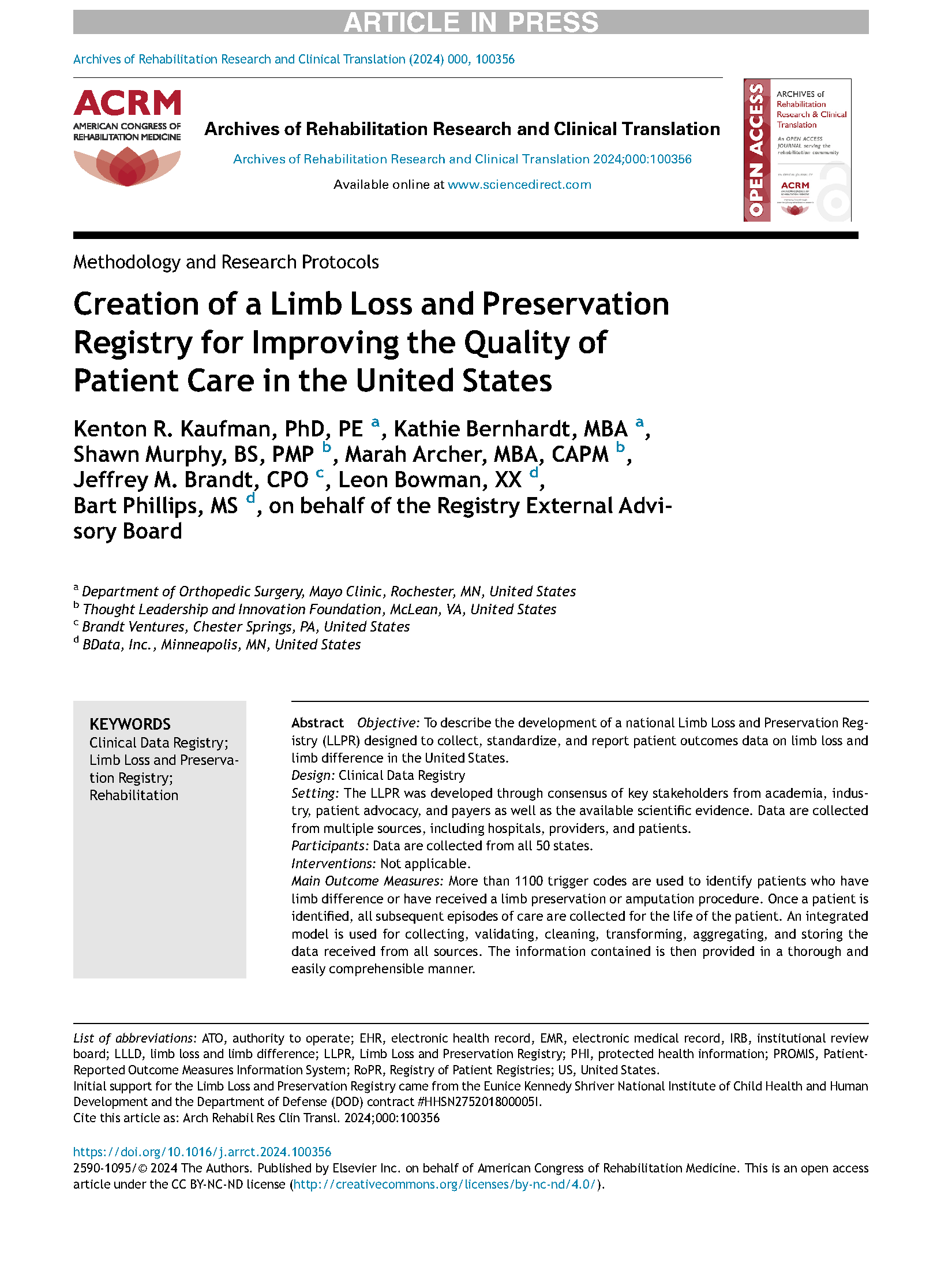ACRM
Full article on: ACRM
Abstract
Objective
To describe the development of a national Limb Loss and Preservation Registry (LLPR) designed to collect, standardize, and report patient outcomes data on limb loss and limb difference in the United States.
Design
Clinical Data Registry
Setting
The LLPR was developed through consensus of key stakeholders from academia, industry, patient advocacy, and payers as well as the available scientific evidence. Data are collected from multiple sources, including hospitals, providers, and patients.
Participants
Data are collected from all 50 states.
Interventions
Not applicable.
Main Outcome Measures
More than 1100 trigger codes are used to identify patients who have limb difference or have received a limb preservation or amputation procedure. Once a patient is identified, all subsequent episodes of care are collected for the life of the patient. An integrated model is used for collecting, validating, cleaning, transforming, aggregating, and storing the data received from all sources. The information contained is then provided in a thorough and easily comprehensible manner.
Results
To date, the LLPR has captured data from >435,000 patients and >11.5 million episodes of care.
Conclusions
The LLPR creates opportunities to apply large-data analytical methodologies to provides caregivers, researchers, manufacturers, payers, and policy makers the tools needed to improve the quality of clinical care, quantify patient-centric outcomes, develop clinical practice guidelines, assess patient quality of life, identify appropriate technology, and guide creation of national policies to allocate scarce sources appropriately.
Click the image below to read the full article.
Appendix
Download page
